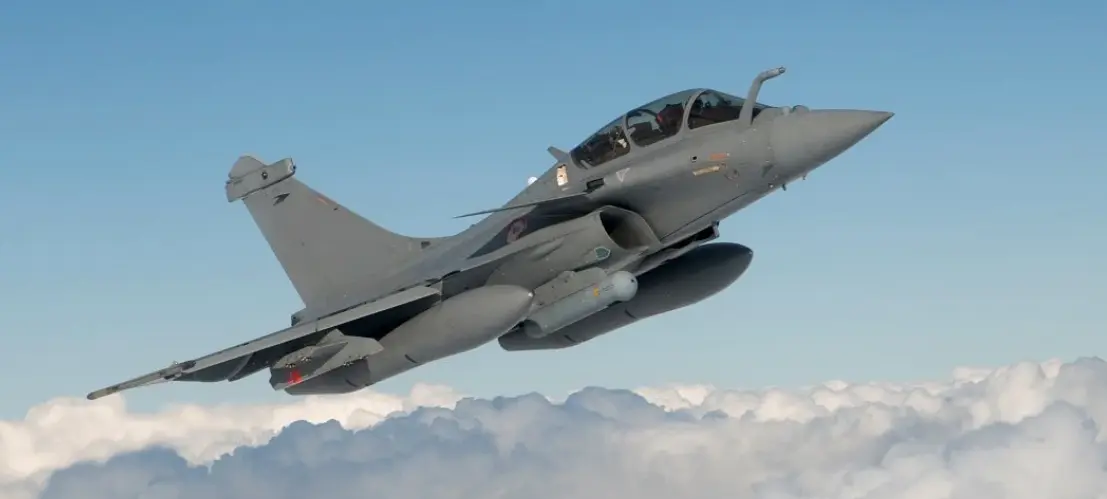
Operation Sindoor saw the IAF neutralize Pakistani fighter jets, drones, and missile systems in a 4-day air assault.
Air Assault on Pakistan – India’s Operation Sindoor has emerged as one of the most decisive aerial campaigns in recent history, showcasing the Indian Air Force’s (IAF) precision strikes and strategic dominance. Over four intense days, the IAF neutralized key Pakistani military assets, including fighter jets, surveillance aircraft, drones, and missile systems.
The operation was launched in retaliation for the Pahalgam terror attack, which claimed 26 civilian lives. India’s calibrated air campaign, executed between May 6 and May 10, forced Pakistan to seek a ceasefire, marking a significant victory for India’s defense forces.
IAF’s Tactical Execution: A Breakdown of the Assault
Day 1: Initial Strikes on Terror Infrastructure
- The IAF targeted four terror hubs in Pakistan and five in Pakistan-Occupied Kashmir (PoK).
- High-profile targets included Sawai Nala camp in Muzaffarabad, Markaz Taiba in Muridke (Lashkar-e-Taiba HQ), and Markaz Subhan in Bahawalpur (Jaish-e-Mohammed HQ).
- Precision-guided munitions ensured maximum impact with minimal collateral damage.
Day 2: Escalation and Pakistani Retaliation
- Pakistan launched missile and drone attacks on Indian military and civilian centers.
- The IAF responded with force, targeting nine Pakistani airbases and multiple radar sites.
- Electronic warfare assets disrupted Pakistan’s air defense systems, leaving them vulnerable to further strikes.
Day 3: High-Value Targets Eliminated
- The IAF destroyed six Pakistani fighter jets, two surveillance aircraft, and one C-130 military transport aircraft.
- More than ten armed drones, including Chinese-made Wing Loong variants, were neutralized.
- Long-range Sudarshan missile strikes took out Pakistan’s Airborne Early Warning and Control (AEWC) aircraft.
Day 4: Pakistan Seeks Ceasefire
- Indian air defenses intercepted multiple Pakistani cruise and ballistic missiles.
- Pakistan accused India of targeting civilian areas, but Indian officials dismissed the claims as propaganda.
- With mounting losses, Pakistan requested a ceasefire, effectively ending the conflict.
Strategic Impact of Operation Sindoor
India’s Military Superiority
Operation Sindoor demonstrated India’s ability to conduct precision strikes deep inside enemy territory. The IAF’s use of air-launched cruise missiles, electronic warfare, and advanced fighter jets showcased India’s technological edge.
Pakistan’s Military Setback
Pakistan’s air capabilities were severely weakened, with defense analysts estimating that the country’s aerial combat strength has been set back by at least five years. The loss of key surveillance aircraft has crippled Pakistan’s ability to monitor Indian airspace effectively.
Geopolitical Ramifications
- India’s decisive action has sent a strong message to adversaries, reinforcing its commitment to national security.
- Pakistan’s reliance on Chinese-made drones has raised concerns about China’s involvement in regional conflicts.
- Global defense analysts are now closely monitoring India’s hypersonic missile development, which could further tilt the balance of power.
Conclusion – Air Assault on Pakistan
Operation Sindoor marks a turning point in India’s military strategy, proving that precision air strikes can effectively neutralize enemy threats. The IAF’s dominance in the four-day conflict has reshaped South Asia’s defense landscape, reinforcing India’s position as a formidable military power. As India continues to advance its defense capabilities, the success of Operation Sindoor serves as a blueprint for future military engagements, ensuring that national security remains uncompromised.
2 thoughts on “Air Assault on Pakistan- the IAF’s Devastating 4-Day: Operation Sindoor”